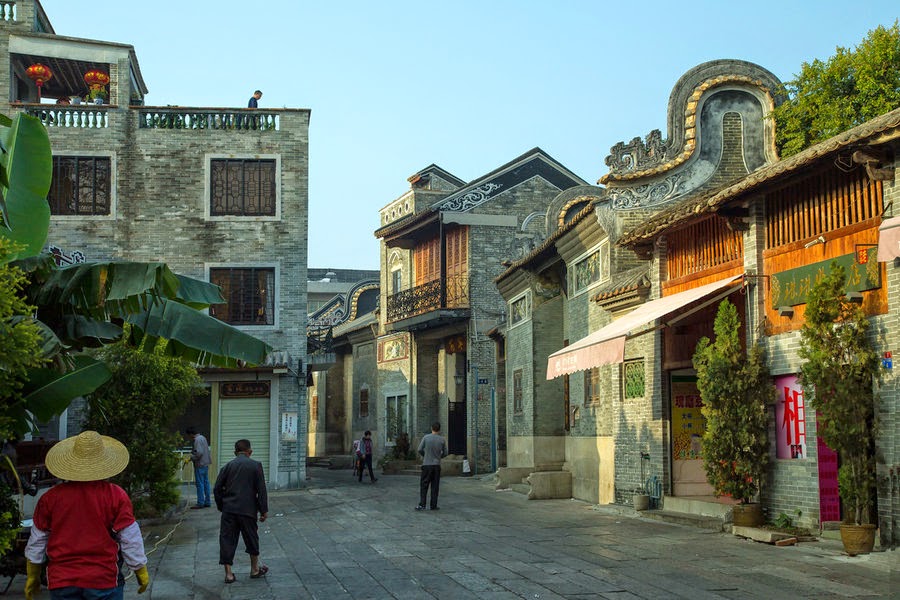Panyu Shawan
ancient town was built in the Song Dynasty. It is one of the famous Pearl River
Delta towns with long history of prosperity and preserved historic building.
The existing vertical and horizontal scattered streets, dotted with historic
houses and temples, canopies decorated with carved edge Qiao Liang Fang, brick,
stone, wood, gray eagle, colorful murals, deeply reflected the Lingnan Culture
and the profound artistic charm. Shawan
Ancient Town
Main attractions
and sights in Shawan
Ancient Town:
Liugeng Hall is
located in the northern part of the village and is one of the most famous
ancestral halls in the town. Built in 1275 during the Yuan Dynasty, the
original building was destroyed only to be rebuilt in the year 1700 over the
course of 17 years during the reign of Emperor Kangxi of the Qing Dynasty. The
building occupies 3334.25 square meters and is an exemplary example of the ancient
science of Fengshui with a hall of worship, a drum tower and east-west
verandas.
Wenfeng Pagoda
Wenfeng Pagoda can
be found in the Guan Alley of the northern village. Built in 1721, this site
was once the highlight of the ancient attracting superstitious academics and
children from near and far who flocked here in droves to worship the statues inside.
The pagoda itself has three stories and six corners.
He Binglin
Memorial Hall (Yanqing Hall)
This memorial hall
on Anning Middle Street China China
For more
information, please visit www.top-chinatour.com





No comments:
Post a Comment